I'm currently trying to develop a similar result as this link. I have a significant number of columns and several different labels for the x-axis.
col1 <- c(2, 4, 1, 2, 5, 1, 2, 0, 1, 4, 4, 3, 5, 2, 4, 3, 3, 6, 5, 3, 6, 4, 3, 4, 4, 3, 4,
2, 4, 3, 3, 5, 3, 5, 5, 0, 0, 3, 3, 6, 5, 4, 4, 1, 3, 3, 2, 0, 5, 3, 6, 6, 2, 3,
3, 1, 5, 3, 4, 6)
col2 <- c(2, 4, 4, 0, 4, 4, 4, 4, 1, 4, 4, 3, 5, 0, 4, 5, 3, 6, 5, 3, 6, 4, 4, 2, 4, 4, 4,
1, 1, 2, 2, 3, 3, 5, 0, 3, 4, 2, 4, 5, 5, 4, 4, 2, 3, 5, 2, 6, 5, 2, 4, 6, 3, 3,
3, 1, 4, 3, 5, 4)
col3 <- c(2, 5, 4, 1, 4, 2, 3, 0, 1, 3, 4, 2, 5, 1, 4, 3, 4, 6, 3, 4, 6, 4, 1, 3, 5, 4, 3,
2, 1, 3, 2, 2, 2, 4, 0, 1, 4, 4, 3, 5, 3, 2, 5, 2, 3, 3, 4, 2, 4, 2, 4, 5, 1, 3,
3, 3, 4, 3, 5, 4)
col4 <- c(2, 5, 2, 1, 4, 1, 3, 4, 1, 3, 5, 2, 4, 3, 5, 3, 4, 6, 3, 4, 6, 4, 3, 2, 5, 5, 4,
2, 3, 2, 2, 3, 3, 4, 0, 1, 4, 3, 3, 5, 4, 4, 4, 3, 3, 5, 4, 3, 5, 3, 6, 6, 4, 2,
3, 3, 4, 4, 4, 6)
data2 <- data.frame(col1,col2,col3,col4)
data2[,1:4] <- lapply(data2[,1:4], as.factor)
colnames(data2)<- c("A","B","C", "D")
> x.axis.list
[[1]]
expression(beta[paste(1, ",", 1L)])
[[2]]
expression(beta[paste(1, ",", 2L)])
[[3]]
expression(beta[paste(1, ",", 3L)])
[[4]]
expression(beta[paste(1, ",", 4L)])
myplots <- vector('list', ncol(data2))
for (i in seq_along(data2)) {
message(i)
myplots[[i]] <- local({
i <- i
p1 <- ggplot(data2, aes(x = data2[[i]])) +
geom_histogram(fill = "lightgreen") +
xlab(x.axis.list[[i]])
print(p1)
})
}
In the past, I've been able to do something similar to this where I can just put x.axis.list[[i]] in my loop and change the symbols. However, I continue to get the term expression on the axis. So the symbol for Beta is correct as well as the subscript but the word "expression" remains. I'm not sure exactly what I'm doing wrong, for a moment, I was able to produce a plot without "expression" but it has since stayed in the ggplot.
I want to be able to produce this plot, or one with the title on the y-axis without the word "expression".
My image currently looks  . I'm not worried about this example data and the result of the plot, I'm wondering how to get rid of "expression" so only the math symbol shows.
. I'm not worried about this example data and the result of the plot, I'm wondering how to get rid of "expression" so only the math symbol shows.
Thanks in advance.
